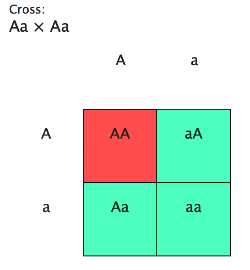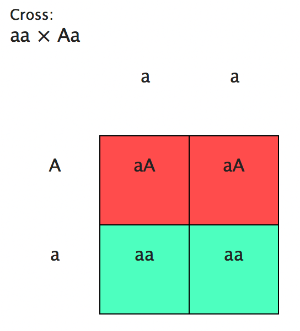
All Solutions
Page 363: Chapter 14 Assessment
The sons of person 3 did not inherit the trait because the mother must not be a carrier.
Hemophilia is an x-linked recessive trait, meaning that it is only exhibited in males where they have and X and a Y chromosome.
Females do not show the trait because they have two x chromosomes, where if they are a carrier, the regular one (the wild type allele) is dominant over the hemophilia allele.
In this case, we can represent the recessive allele using letter a and the dominant allele, which is the normal allele, using capital letter A. If two parents carry one allele for the disease, their genotype is Aa. If you cross Aa with another Aa, the possible genotypes are AA, Aa, Aa, and aa.
Results:
AA = 25%
Aa = 50%
aa = 25%
The results indicate that there is a 25% chance that the parents will have a healthy offspring. There is also a 50% chance that the recessive allele will be carried by the offspring and there is 25% chance that the offspring will have the Tay-Sachs disease.
AA = 25% (healthy)
Aa = 50% (carries the allele for the disease)
aa = 25% (with Tay-Sachs disease)
The results indicate that there is a 25% chance that the parents will have a healthy offspring. There is also a 50% chance that the recessive allele will be carried by the offspring and there is 25% chance that the offspring will have the Tay-Sachs disease.
aa = affected father
Aa = carrier mother
aa x Aa = Aa, Aa, aa, aa
Aa = 50%
aa = 50%
The results show that there is a 50% chance that the sons will be colorblind
and 50% chance that the girls will carry the defective gene.
and 50% chance that the girls will carry the defective gene.
Normally, a woman has eggs between 500,000 to 2 million eggs in her entire lifetime but as she ages, this number declines. By the time that a woman reaches the age of 40, her eggs might not work the same way it was when she was younger and the rate of protein production in her egg cells might have decreased. As a result, abnormalities in the chromosome may occur.

